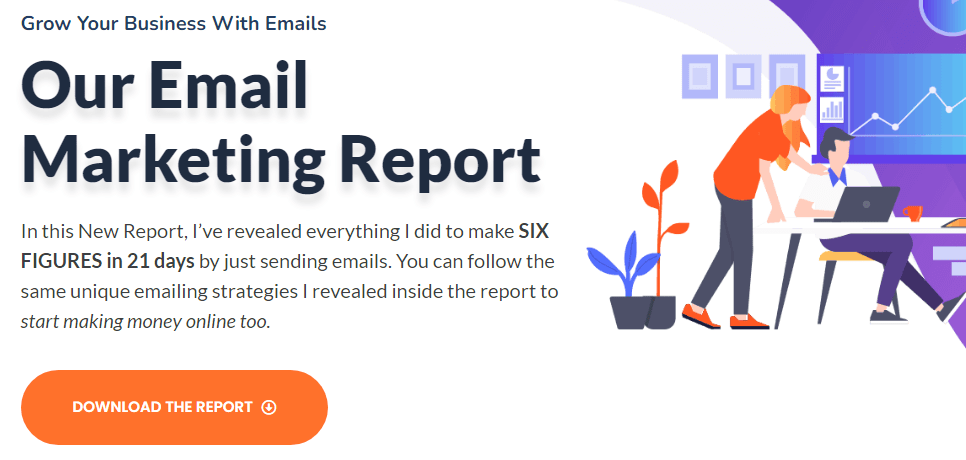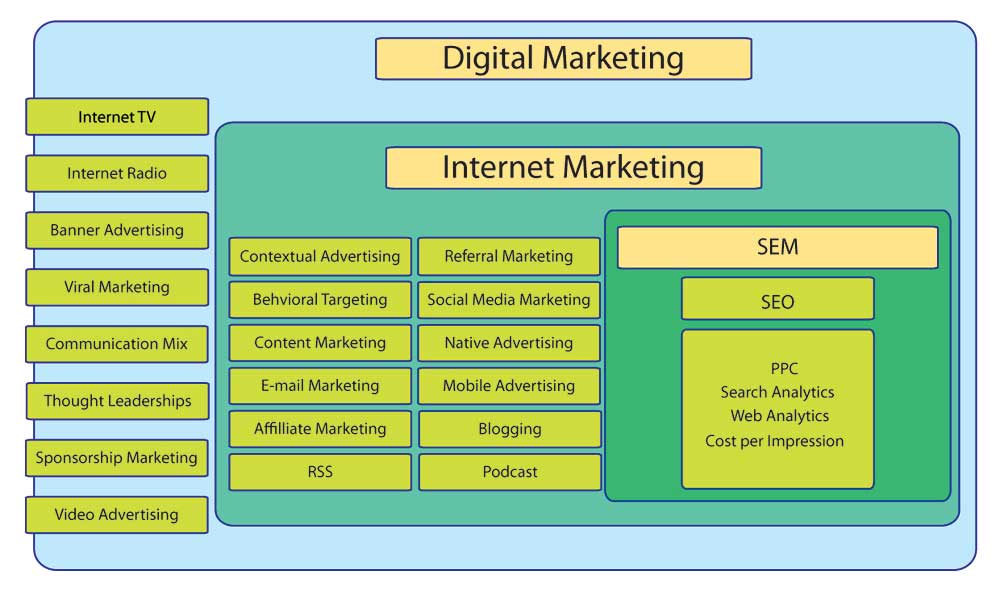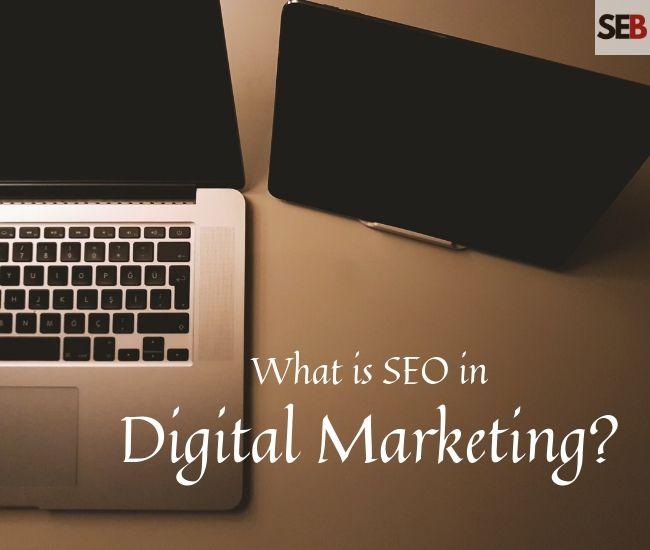Wondering what is SEO in digital marketing? Here’s SEO in a nutshell. Everything you need to know about search engine optimization.
SEO in Digital marketing is an ever-evolving field. Things change every day. Search engines are constantly updating their algorithms. There are no guarantees that what worked today will work tomorrow.
That’s the reality of the search space. Hence, marketers must always stay on the cutting edge to remain relevant.
Regarding remaining relevant, my goal with this post is not to force down your throat my idea of what search engine optimization is and isn’t. It’s not to show off my skills, either.
Want to Grow Your Real Estate Business? Download the Complete Grant & Funding eBook for instant access to grants, guides, and more. 80+ Grant and Scholarship Opportunities (FG, State-by-State, General & Underrepresented Groups Scholarships, Plus Grant Writing Checklist). 900+ Copies Sold Already. Get Your Copy Now
To be honest, thinking about it now, I was motivated by a selfish reason to publish this post.
My goal with this writing is to get my thoughts straight and really have another look at what SEO has become today.
It’s not about you. It’s for me…me.
That said, if you aren’t pissed off already, you might as well stick around for a while longer. Perhaps, you will learn something you can implement in your business too.
You Might Also Like: The Top 15 Small Business Challenges and How to Navigate Them

What is SEO?
SEO is an acronym for Search Engine Optimization. It refers to everything you do to make your website visible to search engines and users.
Think of SEO as a science and art kind of something. You’re in a constant tug of war to accomplish two things at the same time:
- Get search engines to discover, crawl, index, and rank your site.
- Provide excellent user experience for anyone who lands on your website. That could include ease of navigation and publishing valuable, helpful content.
Though, the definition above is very simplistic. It doesn’t take into account the nuance of the process. However, it sure captures the essence of what SEO is about.
In reality, search engine optimization is more of a balancing act between satisfying user experience and making Google happy.
You don’t want to lean too much toward the technical aspect of SEO. The result could be a terrible user experience that would frustrate visitors to your site.
And, although many SEOs (people who work in search) will tell you to focus more on improving user experience, you still want to ensure that search engines understand your website.
So, how do you make Google happy with your website?
First, you must understand that Google is a business that tries to help users find the most useful information about anything.
To ensure these users keep returning, they serve them websites they believe provide detailed answers to their queries.
Now, imagine for a moment that a user queries Google for, say, “best restaurants in Lagos,” and the search engine returns answers for restaurants in PortHarcourt.
What do you think the user will do? Typically, they will abandon Google for another search engine that provides their desired answers.
Google doesn’t want that to happen.
Now, to the question, how do you make Google happy?
By making sure, your website is the most valuable resource in a particular niche.
For example, if your business sells female apparel, you can publish a detailed fashion guide that answers a specific question like: “What to wear on a first date?”
So, because you published helpful content when a user queries Google about “dress idea on a first date,” your website comes up.
Now, besides publishing detailed, helpful content, before your website can show up on search engine result pages (SERPs), a couple of things must be in place.
You need to sort out the technical or on-page and off-page parts of SEO
What is On-page SEO?
On-page SEO is a process that ensures all the technical bits of optimizing your website are in place. On-page SEO, as the name implies, includes everything you do on the website to improve its ranking in SERPs.
On-page SEO ensures Googlebots can easily understand and crawl your site.
Think of it as those essential tasks that tell Google: there’s a new website here please, come and take a look.
Of course, there are several such on-page optimization tasks. I’ll briefly touch on a few.
To read up on the other factors, you may want to check out Brian’s post on the matter.
Examples of On-page Search Engine Optimization
Title tags – use title tags to structure your content. The H1, H2, H3, and so on tags help you highlight the most important part of your content.

The title tags tell Googlebot’s and users at a glance what the page is about. And it is also displayed in search results.
While writing your title tag, limit it to 50-60 characters, as anything longer than that is cut off from the search results.
Robot.txt – upload a .txt file to your web host and include all the pages you want to prevent the search engine crawlers from indexing.
Sitemap – Use this file to speed up your web page indexation. Create a sitemap with the RankMath SEO tool, then upload it to your web host.
Also, submit the sitemap to search engines. Googlebot uses the sitemap to discover new content and pages on your website.
Site Speed – A fast site speed is non-negotiable, especially if you want to rank well on Google search result pages.
And, if you own an e-commerce site, you will leave a ton of money on the table with a slow-loading website.
Use Google’s free Page Speed Insight or GTmetrix to measure your site’s speed. Follow the detailed recommendations to resolve speed issues.
Meta tags – Though, they don’t have the same weight as they used to, meta tags are still super important to increase click-through rates.
Meta descriptions are part of the information Google pulls when showing your website in search results.

And users will often read the meta description below the title tags to decide whether to click on your website.
Image alt tags – Google crawlers can not read an image. There’s no way they can tell what a picture is about. So, alternate (alt) tags tell Googlebot what the image is about.
It is also a part of SEO best practice to include the keywords you want to rank for in the alt tag.
Recommended For You: Steady Streams Of Organic Leads to Grow Your Business

What is Off-page SEO?
Off-page SEO, as the name implies, is something you do off-site to increase your website’s ranking in search engine result pages.
Off-page SEO techniques are primarily focused on boosting the site’s authority. And to draw other site users’ attention to it, hoping they would also visit your website.
Off-page optimization, at a closer look, is about building relationships with other bloggers, influencers, and businesses in your niche.
And, often these relationships translate to a link back to your website, a brand mention, a retweet of your posts, or a review of your services.
Examples of Off-page Search Engine Optimization Techniques
Remember what we said earlier about off-page SEO? It’s primarily about building relationships with others.
With that in mind, let’s look at some of the best Google-approved methods to run an off-page SEO campaign.
Backlinking
A lot has already been said about link building. It’s an enormous impact on website ranking when done right. And the risk of Google’s penalty when you go wrong.
Currently, for this blog, we haven’t done any aggressive link-building campaign. However, we use HARO, short for Help A Reporter Out – a free service that allows you to contribute to publications and hopefully linked to them.
To get an idea of how effective HARO is, we have only responded to four queries. Two reporters got back to us. One used our contribution and gave us a do-follow link.
The best part about this strategy is that; it is passive-aggressive, and you don’t have to do much work. And the results are often from quality websites.
Other proven link-building strategies include:
Good ol’ guest posting – Guest blogging still works in 2019. However, you must ensure you’re doing it for the right reasons.
Google frowns at guest posting targeted only as a link-building strategy. So, if your goal is to introduce your website to new readers who are a cross-match with your ideal audience, then guest blogging might just be what you need.
Be sure that you offer relevant, timely, and valuable content.
Offer your expertise to universities – Backlinks from .edu domains are like premium. One of the easiest ways to get this link is to reach universities and offer your expertise.
Be sure to have done your due diligence to find courses or programs related to your industry. Then, offer your resources to the school.
Reach out to other bloggers linking to a similar resource – To use this strategy, you must produce EPIC content first. To learn about EPIC content, check out this post on SmartBlogger.com
Your new content must be better than what’s out there already. Or it must bring a new perspective to the discussion.
Once your epic content is ready, reach out to the blogs linking to the other articles.
The idea is if they are linking to similar resources, they will likely link to yours too.
This link-building strategy is called the SkyScraper technique and was first used by Brian Dean of Backlinko.
Learn more about the technique here: Skyscraper link building
Offer to replace broken links on other websites – Here’s how you evaluate the links on a website. Before conducting a link analysis for any website, be sure the website’s readers overlapped with yours.
Then, identify all broken links. With your list at hand, contact the site owner and request they replace the broken links with links from your website.
To increase your chances, you must have the resources you’d like them to link to be similar to the one you intend to replace.
This strategy is effective because you’re doing the site owner a favor by letting them know about the broken links and allowing them to replace them.
Social media marketing
Social media is another off-page search engine optimization technique you can use to grow your website rank.
Though, in and of itself, social media signals don’t impact your search ranking. Google doesn’t use social signals directly to rank websites.
But that doesn’t mean social media don’t impact your site’s authority, trustworthiness, and perception.
For example, if hundreds or even thousands of people share your content and link back to them – it sends the signal that you offer valuable content, which will, in turn, attract more people to your site.
Plus, remember backlink is a ranking factor, so Google will gladly move your website up through the listing.
However, before using social media, you must understand the platforms your audience spends the most time on.
Here’s an article that breaks down the different social media websites for small businesses.

Influencer marketing
Influencer marketing, though often overlooked, is one effective off-page SEO tool you should have in your toolkit.
Influencer marketing involves reaching out to established brands – websites, and individuals and asking them to share your content.
Usually, these influencers have a large following and high domain authority which means once they share your content or link to you, you’re going to get a spike in traffic, plus authority juice from their website.
When we launched smartentrepreneurblog newly, we reached out to an influencer on Twitter who retweeted our tweet and encouraged his audience to read the article.
The result was a spike in visits. We got over 654 unique hits in one day; that was our highest visit until that day.
Leverage your original images to earn backlinks
Image attribution is an underrated technique to earn backlinks without extra work.
Use Google reverse image search and Tineye.com to search online for websites using your original images.
Then reach out and request they attribute the image to you.
Read more about other different off-page SEO techniques here.
So, how does search engine optimization tie in with digital marketing?
SEO is an integral part of digital marketing. Think of it like this, digital marketing is the umbrella term used to describe all marketing efforts online.
Search engine optimization is just a tiny part of the digital marketing world.
Here’s a nifty infographic that illustrates the relationship between SEO and digital marketing:

Today, SEOs are expected to have at least content marketing skills in addition to their technical search optimization skills.
The reason is not far-fetched, Google, through its constant updates, has outdated almost every other SEO technique that used to work in the past, except, of course, publishing quality content.
Hence, the line between SEO and other aspects of online marketing has become increasingly blurred.
What is SEO in digital marketing? SEO in a nutshell: Final thoughts
To succeed with SEO, you need an integrated approach that cuts across several digital marketing disciplines.
You will need to stay on top of your social media marketing game, deploy unbeatable content marketing strategies, and turn to influencers where it makes sense.
The bottom line is, today’s SEO is multifaceted; you will need to wear many hats to get your website ranked on SERPs.
As SEO continues to evolve, it’s worth looking beyond the traditional playbook. Making sure your content and brand show up not just in search results, but also in the AI-driven platforms people are starting to use, can help you stay a step ahead as the way we find information online keeps shifting.
Recommended For You: Free Business Templates to Streamline Your Workflow

Hand-Picked For You:
- FAQs: How to Start a Business In 2022
- FAQs: How to Grow Your Business In 2022
- FAQs: How to Fund Your Business In 2022

